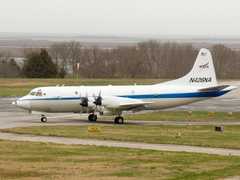X-band radars are ground-based radars that operate in the 8-12 GHz frequency range. They provide measurements of radar reflectivity, Doppler velocity, and other radar parameters to characterize precipitation and clouds. Due to operating on a smaller wavelength, the X-band radars are more sensitive and can detect smaller particles, making them useful for studying light precipitation and cloud development.

Instrument Details
- Radar
- Earth Science > Atmosphere > PrecipitationEarth Science > Spectral/engineering > Radar > Doppler VelocityEarth Science > Atmosphere > CloudsEarth Science > Spectral/engineering > Radar > Radar BackscatterEarth Science > Spectral/engineering > Radar > Radar Reflectivity
- Full Column Profile
- Variable
- Variable
- 8-12 GHz
- Currently unavailble
Currently unavailable
Currently unavailable
Various
Currently unavailable
Currently unavailable
Filter data products from this instrument by specific campaigns, platforms, or formats.
CAMPAIGNS
PLATFORMS
FORMATS











